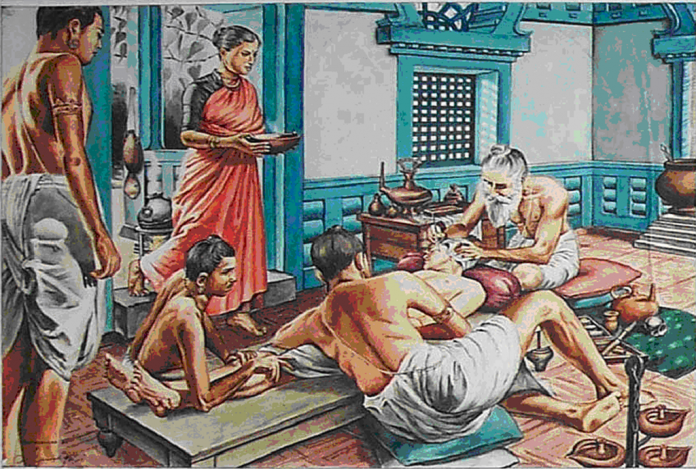Most of us think that the science of plastic surgery is a recent medical marvel achieved with the help of new era technology, but this knowledge has been around since 600 BCE. Sushruta, a plastic surgeon from India, is known as the “father of Indian plastic surgery,” as his methods paved the way for our modern plastic surgery science. His medical work and methods are found in Hindu text Atharvaveda (one of the four Vedas) under the title Sushruta Samhita, which is believed to be the first surgical text.
Sushruta Samhita, which translates to “Sushruta’s Compendium,” describes the ancient traditional surgical procedures in Indian medicine. Considered as the most advanced compilation of surgical practices of its time, it also contains the teachings of allied branches including midwifery. Sushruta mentions in the text that “Anyone who wishes to acquire a thorough knowledge of anatomy must prepare a dead body and carefully observe and examine all its parts.” The explanation also includes that a body is to be submerged in water and allowed to decompose. Then one would thoroughly examine every stage layer by layer. Now, the most interesting fact to be noted is that the dissection wasn’t performed using instruments.
So how did Sushruta close deep cuts without modern surgical instruments? Well, he used heads of giant ants (ones with big pincers) to effectively staple a wound while performing surgery for gastrointestinal perforations. Once the pincers are in place grabbing the edges of the wound, the physicians would then cut the body off the ants, leaving their jaws in place. The stitches had to be equally spaced as having the gap too wide would cause pain in the wound, while having the stitches too close would contract the wound edges.
Another highlight of Sushruta’s surgery is the operation of rhinoplasty. (Nothing to do with rhinos or their plastic surgery.) Rhinoplasty is the process of making a new nose and this technique alone brought him fame as the originator of plastic surgery. The current Indian rhinoplasty is just a modification of his original method where the forehead flap, the skin right above the eyebrow, was used to perform the surgery. Sushruta came up with the idea in 600 BCE, and it was introduced to Europe in 15th century.
Sushruta Samhita was first published in Europe by Hessler in Latin in the early 19th century, but the first English translation was done by Kaviraj Kunja Lal Bhishagratna in three volumes in 1907 in Calcutta, India. His detailed surgical description, insight, and accuracy in the text are impressive. It includes 184 chapters and 1,120 conditions that include various medical explanations, and treatment procedures ranging from injuries and illnesses relating to ageing, to mental illness. His compendium doesn’t cut slack for surgeons, and includes chapters on training and practice including description of over 120 surgical instruments.
Sushruta’s brilliance is uncanny when it comes to surgical science, and is recognized by many surgeons across the globe. Allen Oldfather Whipple, another surgeon and the 19th century’s major innovator in pancreatic surgery, said, “All in all, Sushruta must be considered the greatest surgeon of the pre-medieval period.”


